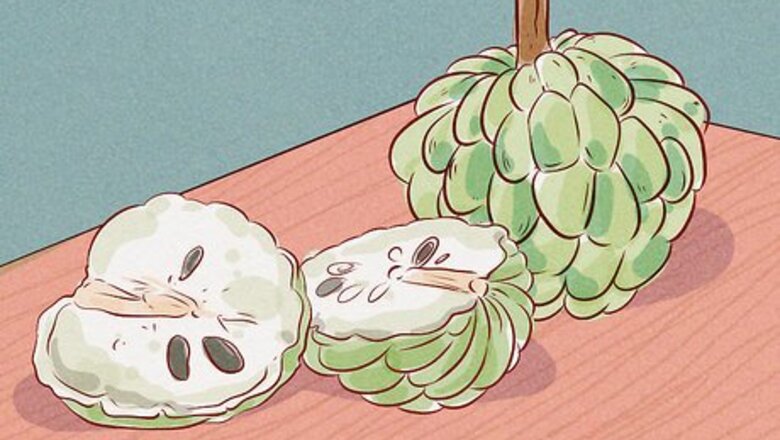
views
Enjoying Custard Apples on Their Own

Cut the custard apple in half. Slice the fruit open lengthwise, from the woody stem to the rounded bottom, then separate the two halves. Inside, you’ll find the creamy white flesh that the custard apple is named for. To avoid mashing the soft flesh, make sure the knife you’re using is nice and sharp. If the custard apple you’re eating is ripe enough, you may be able to simply sink your fingers into the middle of the fruit and pull it apart by hand.
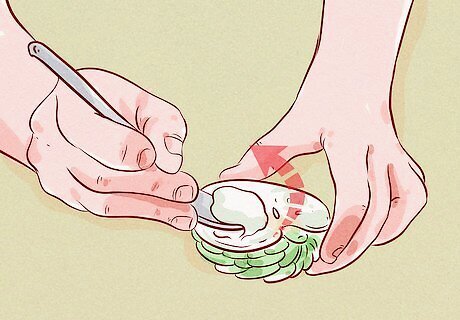
Scoop out the pale flesh with a spoon. Run the edge of the spoon around the underside of the skin to loosen the edible flesh. It should come out in large chunks, which you can then eat whole or reduce to a more manageable size before adding them to your favorite recipes. The flesh closest to the skin tends to be a little more bitter than the rest, so avoid scooping too deep if you’d prefer to savor the sweetest part of the fruit. Unlike regular apples, custard apples should always be eaten without the skin.

Remove any seeds you find. Around the core of the custard apple there will be a cluster of small, dark seeds, not unlike an ordinary apple. Use the tines of a fork to dig out these seeds, or pick them out with your fingers. Once you’ve de-seeded your custard apple, it will be ready to eat! Take care to remove every last seed before you take a bite. They’re hard and can be easy to miss, which means chomping down on one won’t be a fun experience.
Using Custard Apples in Your Favorite Recipes
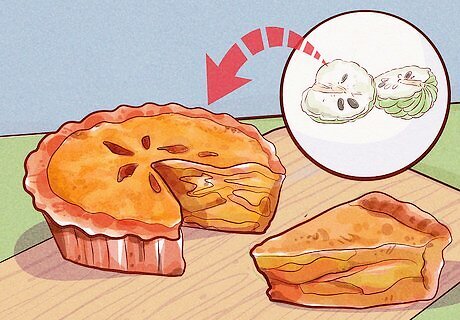
Use custard apples as a substitute for regular apples. The next time you put together a fruit salad or bake some homemade pies or tea cakes, reach for the custard apples instead of the usual Granny Smith or Red Delicious varieties. They’ll offer the same mouthwatering sweetness, but with a uniquely tangy flavor and a smoother consistency. Custard apples will also work well when incorporated into simple preparations like applesauce and fruit-based relishes. You can also use a handful of finely-diced custard apples as a simple topping for pancakes, parfaits, or oatmeal.
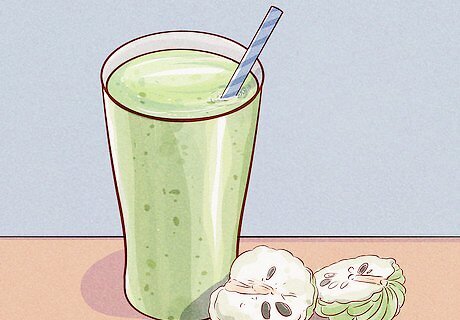
Add custard apples to a smoothie. Throw some ripe custard apple segments into the blender along with other fresh fruits and veggies, a couple spoonfuls of yogurt, crushed ice, and a splash of juice or milk. The delightfully tart notes of the fruit will stand out well without overpowering the other ingredients. Since custard apples are known for having a somewhat sharp aftertaste, they’ll pair especially well with super-sweet fruits like bananas, peaches, mango, and strawberries. Blending custard apples into a smoothie is a good way to take advantage of high amounts of vitamin C, potassium, and fiber they contain if you’re not big on the flavor of the fruit itself.
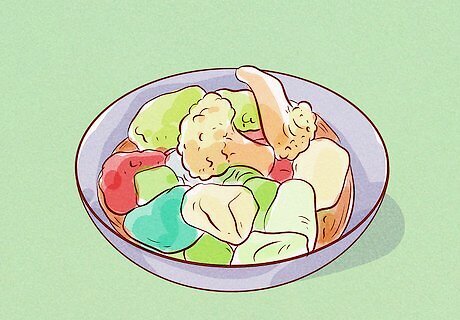
Incorporate custard apples into savory dishes. Try mixing a cup of chopped custard apples into a stir fry, a bowl of chicken salad, or some zesty vegetarian curry. Much like regular apples, the sweetness of custard apples can provide a pleasant contrast to hearty, salty, spicy offerings. Experiment using custard apples in savory recipes that traditionally call for other varieties of apples, like pork chops with baked apples or apple-stuffed chicken sausages.
Buying and Storing Custard Apples

Give the custard apple a squeeze to see if it’s ripe. A quick touch test is the most reliable method of determining whether a custard apple is ready to eat. Press your fingers gently into the skin around the center of the fruit. It should be firm, but have a little bit of give, similar to an avocado. When perfectly ripe, the skin of a custard apple is typically a light green or yellowish color. However, some fruits will remain a darker shade of green even after they’ve reached maturity.
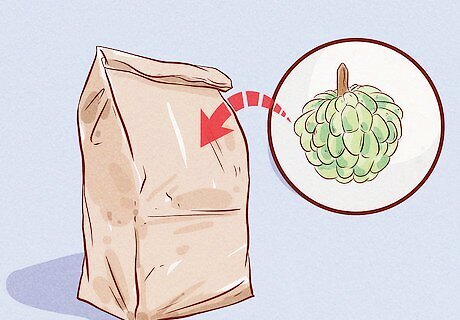
Ripen immature custard apples in a paper bag. To enjoy your still-too-green fruit sooner, place it in a paper bag and roll up the top tightly. The gases that escape naturally during the ripening process will be trapped in the bag, causing the custard apples to ripen faster. If you really want to speed things along, stick a banana inside the bag with your custard apples to increase the amount of ripening gases present. Try to avoid letting your custard apples get overripe, as this can spoil both their flavor and texture.
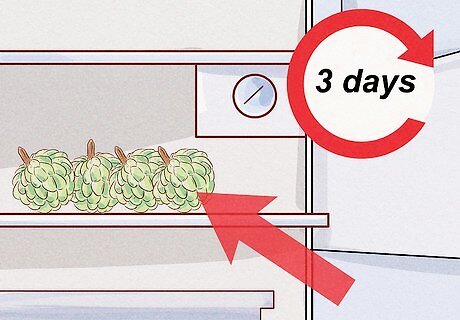
Store ripe custard apples in the refrigerator for up to 3 days. Transfer whole or sliced fruit to an airtight container and leave it in the crisper drawer or on one of the upper shelves. When properly stored, it should stay good for at least a couple days. However, it will be best when enjoyed right away, if possible. Keeping custard apples in a lidded container or plastic bag will help prevent them from turning brown as quickly. Throw out your custard apples when the skin begins to take on a black or slimy appearance.




















Comments
0 comment